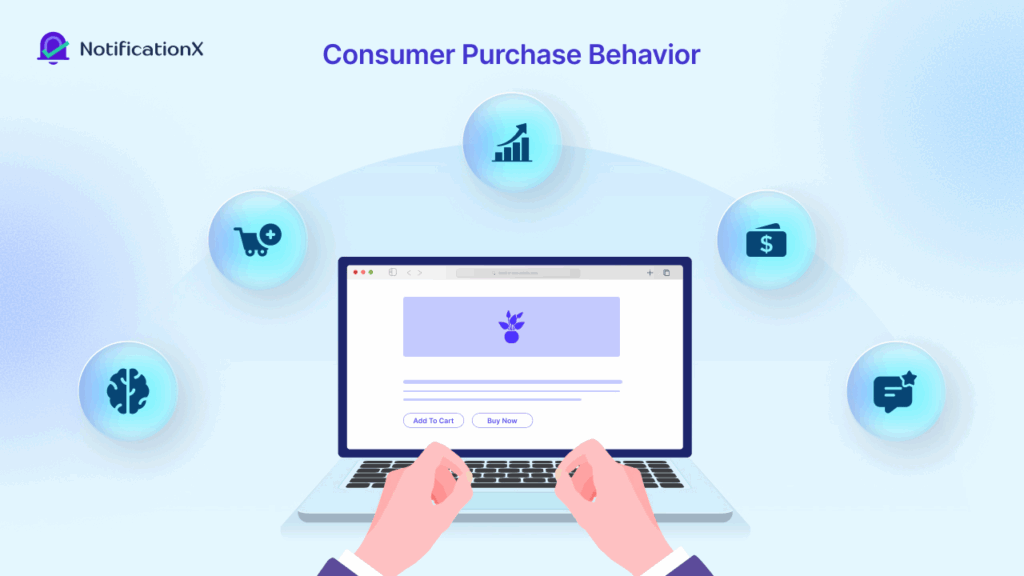Marketing in the 21st century is different from what it was in the past. There are new and exciting approaches to marketing, one of which is Location-Based Marketing (LBM). This strategic approach enables companies to market their products and services to clients within a specific region. The strength of location-based advertising is in the possibility of delivering specific and engaging messages that would appeal to the consumer depending on his/her location and activity.

This blog will explain what is location-based marketing, how it has developed, and, more to the point, showcase real examples of effective campaigns that have used location data to achieve amazing things.
What Is Location-Based Marketing? Things You Need To Know
So, what is location-based marketing? Location-based marketing is a concept that involves marketing messages, advertisements, and offers to a customer based on his geographical position. This approach can be as general as advertising to an entire city or as an individual getting to a customer when they enter a store. The key components of location-based marketing include:
Geo-fencing: Defining a circle around a certain place and setting an action (e.g., sending a message) to be performed when a mobile device enters or leaves it.
Beacons: Physical objects that are located in physical spaces that transmit messages to nearby portable devices, providing location-based information.
Proximity Marketing: Marketing to consumers about their distance from a specific location of interest, be it a store or an event.
Wi-Fi and Bluetooth: Applying these technologies to identify the presence of a customer in a certain place and offer them related products.
The advantages of location-based advertising are numerous and include the following; it enables companies to tailor their messages and offers and hence, gain a higher traffic flow in their stores or shops, and ultimately get higher returns on their investments. Thus, it is possible to increase the conversion rate and improve the relationship with customers by reaching them at the right time.
The Rise of Location-Based Marketing in 2024
Location-based marketing has its roots in the initiation of mobile marketing. It has gradually evolved and been adopted. The development of smartphones, GPS, and mobile applications has contributed to the growth of location-based marketing. At first, location-based advertising was confined to basic, geolocation-based promotional SMS campaigns. However, as technology advanced, so did the capacity of location-based advertising to expand its operations and offer more services.
Today, the Internet and advanced technologies allow you to create very specific campaigns that will reach the customer at the right time and in the right place. Businesses can use sophisticated algorithms and data analytics to develop those highly targeted campaigns. Mobile applications, social networks, and wearable technologies have also contributed to the development of LBM as they provide new opportunities for interacting with consumers.
Some of the trends that are currently being implemented in LBM are the use of artificial intelligence to analyze trends in consumer behavior, the incorporation of augmented reality to provide customers with engaging experiences and the use of big data to understand customers better.
Location-based marketing uses GPS, Bluetooth, and Wi-Fi to identify a user’s location and then sends the relevant message or an offer to the user in real-time. It has emerged as a critical strategic tool as organizations seek to engage consumers on a more personalized level.
Successful Location-Based Marketing Campaigns: Real-World Examples
Location-based marketing has been established as an effective promotional strategy for businesses that seek to target consumers and engage them in a more targeted manner. Through location data, brands can reach out to consumers with messages that will be relevant to them, thus improving traffic flow and sales. Below is the list of location-based marketing campaigns that have been implemented in real life to show how effective this technique is if applied properly.
Starbucks: Geo-Fenced Promotions

LBM has been used by many companies to improve customers’ experience and Starbucks is one of the best examples. Starbucks adopted a geo-fencing campaign in which the firm sent messages to customers who were near a Starbucks store. Whenever customers were within the geofenced area, they were alerted on their mobile devices with an offer or a deal.
This strategy not only enhanced the traffic to the Starbucks stores but also ensured sales during non-peak hours. This way Starbucks was able to sell to potential customers who happened to be in the vicinity without much persuasion. It was apparent that the campaign was a success because the sales and customer activity increased exponentially.
McDonald’s: Proximity-Based Offers

Unlike LBM, McDonald’s targeted proximity marketing that would help attract more people into the stores. The fast-food chain was also using the beacons placed in areas such as shopping malls and train stations to send promotional offers to the customers’ mobile devices as they passed by. These offers included discounts, combo offers, and time-bound menu offers such as lunch and dinner specials.
The campaign was however very successful in directing customers to other nearby McDonald’s, especially during rush hours. This was because McDonald’s was able to offer customers timely and relevant offers, hence more people would visit the restaurant more often and purchase more products. The success of this campaign proves how effective proximity marketing is in reaching out to consumers in their busiest times.
Uber: Location-Based Push Notifications

The push notification campaign was location-based and is a perfect example of how Uber, which has been credited for the use of technology to improve the customer experience, has gone out of its way to make this campaign effective. Uber also utilized location data to target users with relevant push notifications depending on the user’s location and events or activities happening around him or her. For instance, during a big music concert or a sports game, Uber would alert its users with special rates for a ride to the event.
This strategy not only served the purpose of making the app more popular among the customers but also targeted people who were interested in availing convenient transportation services. The success of this location-based marketing campaign was evidenced by the growth of the number of rides during the events and the response from the users who enjoyed the personalized promotions.
Sephora: In-Store Experience Enhancement

Location-based marketing has been used by Sephora, a beauty products selling company, to improve the experience of its customers in the stores. The brand also used the beacons in its stores where they were able to send notifications of offers, products, and beauty tips to customers’ handheld devices while in the store.
This approach not only enhanced customer traffic but also made the shoppers spend more time in the store and they get to look at products and services that they may not have noticed. The average transaction value and the customer satisfaction scores were higher after the campaign had been run.
Coca-Cola: Hyper-Localized Advertising

Coca-Cola‘s hyper-localized advertising campaign is a great example of how location-based advertising can be used to target specific demographics. The beverage giant used location data to deliver tailored advertisements to customers based on their location, time of day, and local events. For example, Coca-Cola ran ads promoting its products at beach locations during hot summer days, when people were more likely to crave a cold drink.
The campaign was highly successful in driving sales and increasing brand awareness. By delivering the right message at the right time, Coca-Cola was able to connect with consumers in a way that felt personal and relevant, leading to higher engagement and customer loyalty.
Key Takeaways from Successful Location-Based Marketing Campaigns
Location-based marketing campaigns are changing the way businesses engage with their clients. This means that through the use of location data, businesses can send timely and relevant messages, which will in the long run help in encouraging people to make a purchase. Now it is time to explore the major approaches that have been used in these real-life campaigns.
📩 Targeted Messaging: By delivering personalized and relevant messages, businesses can grab the attention of the audience and ensure a personalized experience for them. The brands mentioned were able to capture the attention of their target audience and drive action.
🌍 Timing and Location: Timing and location is another crucial factor for the effectiveness of location-based marketing campaigns. It is important to reach customers when they are most likely to engage whether they are near a store, at an event, or in a specific location. For a fruitful LBM campaign, it is vital and those companies have been successful in doing so.
📊 Customer Data and Analytics: Understanding customer behavior and preferences allows businesses to gain deep insights into their customers. This enables them to optimize their campaigns for maximum impact. The use of customer data and analytics allowed these brands to get insights into their target customers.
💡 Creativity and Innovation: Successful location-based advertising campaigns often involve creative and innovative approaches that stand out from traditional marketing methods. So, it is important to stay updated with the latest trends, customer behavioral patterns, and best practices.
Considerations and Challenges in Location-Based Marketing
As with any marketing approach, LBM comes with its challenges, including privacy concerns, technical complexities, and legal considerations. Businesses must look into these challenges carefully to ensure their campaigns are both effective and ethical. Here are some key considerations:
Privacy Concerns and Ethical Considerations: With the increasing use of location data, privacy has become a significant concern for consumers. Businesses must be transparent about how they collect, store, and use location data to avoid violating privacy regulations and losing customer trust. Ensuring that customers have the option to opt in or out of location tracking is crucial for maintaining ethical standards.
Accuracy of Location Data: The effectiveness of location-based advertising depends heavily on the accuracy of location data. Inaccurate data can lead to mistargeted campaigns, resulting in wasted resources and frustrated customers. To mitigate this, businesses should invest in reliable technologies and continuously monitor the performance of their LBM initiatives.
Technical Challenges: Implementing location-specific marketing requires a robust technological infrastructure, including GPS, beacons, and mobile apps. Integrating these technologies and ensuring they work seamlessly can be complex and costly. Additionally, businesses must be prepared to troubleshoot any technical issues that may arise during a campaign.
Legal and Regulatory Issues: Different regions have varying laws regarding the use of location data for marketing purposes. Businesses must be aware of these regulations to avoid legal repercussions. For example, the General Data Protection Regulation (GDPR) in the European Union imposes strict rules on how companies can collect and process personal data, including location information.
LBM offers many benefits but it also presents several challenges and businesses must navigate those to ensure successful implementation.
Future of Location-Based Marketing Campaigns
The future of LBM looks promising as emerging technologies continue to push the boundaries of what is possible. Looking ahead, the future of LBM is bright, with advancements in AI, AR, 5G, and IoT set to take this marketing strategy to new heights. As these technologies continue to evolve, businesses that embrace LBM and stay ahead of the curve will be well-positioned to succeed in the ever-competitive digital landscape. Here are some trends and predictions for the future of LBM:
🔹 Artificial Intelligence (AI) and Machine Learning (ML): AI and ML will play an increasingly important role in LBM by enabling more sophisticated targeting and personalization. These technologies can analyze vast amounts of data in real-time, allowing businesses to predict customer behavior and deliver even more relevant offers and content.
🔹 Augmented Reality (AR): AR is set to revolutionize LBM by creating immersive and interactive experiences for consumers. For example, businesses could use AR to overlay digital content onto the physical world, guiding customers to nearby stores or providing product information as they shop.
🔹 5G Technology: The rollout of 5G networks will enhance the capabilities of LBM by enabling faster data transmission and more precise location tracking. This will open up new possibilities for real-time marketing and hyper-localized campaigns.
🔹 Integration with IoT Devices: As the Internet of Things (IoT) continues to expand, LBM will increasingly be integrated with smart devices. For instance, businesses could send offers to customers based on data from their smart home devices, such as sending a discount on coffee when a user’s coffee machine indicates they are running low on beans.
🔹 Enhanced Customer Experiences: The focus of LBM will shift from simply driving sales to creating more holistic and meaningful customer experiences. Businesses will use location data to build deeper relationships with customers by offering personalized services, loyalty rewards, and other value-added experiences.
Utilize the Power of Location-Based Marketing and Create More Meaningful Campaigns
Location-based marketing is not simply an emerging trend, it is a core component of contemporary marketing initiatives. However, by recognizing its capabilities, using real-life case studies and looking at its further evolution, companies can effectively utilize LBM and build stronger relationships with the consumers that will lead to sustainable success. As modern technologies continue to evolve, businesses that embrace LBM and stay ahead of the curve will be well-positioned to succeed in the ever-competitive digital world.
Did you enjoy reading this blog? If you want to get more insights into marketing like this, berlangganan blog kami dan bergabunglah dengan kami Facebook Group to connect with the community.




